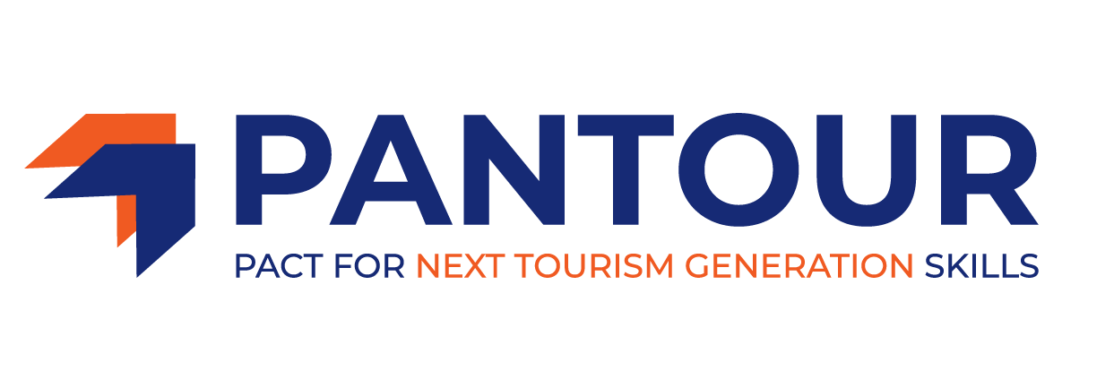The Virtual Amusement Park
Smart destination. A buzzword used to describe the digitalisation of tourist destinations. Specifically, it deals with the connection of digital and real worlds of experience and infrastructure elements. But, what exactly is behind it and where can these “smart” destinations already be found today?
Roller coasters, chain carousels, candy floss and larger-than-life comic figures: children, as well as adults, love amusement parks. The Next Tourism Generation Alliance has analyzed theme parks and attractions as one of five industries. A characteristic and advantage at the same time is that amusement parks and theme parks are closed systems usually controlled centrally by an operator who can coordinate the digital services. In addition, digital applications can be used to show how the leisure activities of travellers are changing. In this blog, our NTG key partner DSFT take a closer look at this industry and, among other things, refer to Constantin Foltin’s research, which he did as part of his Master’s thesis.
The growing popularity of leisure and theme parks
According to the Association of German Amusement Parks, leisure and theme parks are a popular destination not only in Germany, with visitor numbers rising for years and positive sales forecasts. (cf. infographics based on information provided by the Association of German Amusement Parks and Leisure Companies. (VDFU*))
With an annual visitor volume of around 39 million, almost every second German goes to a theme park once a year on average.
For a long time, however, fast roller coasters have not been enough. Increasingly, technological components such as virtual reality coasters are being introduced. For example, the “Alpenexpress” and the “Valerian Coaster” in Europa Park Rust or the new virtual reality car scooter in Schloss Thurn near Nuremberg.
Technological entertainment components to improve the experience
But, what is offered in this context to visitors who are increasingly demanding digital entertainment? One possibility is that before the start of the roller coaster ride every passenger receives VR glasses, on which an animation runs, which corresponds to the movements of the roller coaster. This combines the real experience of the ride with a virtual reality film. In order to be able to construct such experiences even more realistically, the next step is to experiment with augmented reality. One way may be the so-called “Immersive Computing”, which offers various combination possibilities of real and digital world. In concrete terms, virtual and unreal elements are integrated into the real environment in which the roller coaster is located. This development allows an even more intensive immersion into new worlds of experience, in which the feeling of being “in the middle of the action” becomes even stronger. In contrast to VR animations, no self-contained digital film takes place here. The virtual elements, on the other hand, superimpose and complement the reality in which the passenger finds himself/herself.
User interaction design
In addition to these experiences, numerous other technologies are of course already in use in amusement parks today. Wearables – small networked computer wristbands for identification, payment and other interactions – make it easier to stay inside parks. Also, corresponding smartphone applications can be used to reserve tickets, display navigation to the park or track the parking position of your own car on site. A prominent example is Disney’s “Magic Band” or the Volcano Bay Water Park in Orlando.
The new variety of end devices, as well as the different input/output technologies, require new concepts in the field of user interaction design. While we have learned over many years how to handle screen, keyboard and mouse without any problems, a comparable development in the area of “Immersive Computing” is still ahead of us. Even if the digital core competency lies more with the suppliers than with the employees in the amusement park, the staff must be prepared for it with well-founded user knowledge. Instead of imparting comprehensive digital and technological knowledge, the ability to adapt to constantly new developments must be learnt as well as how to deal with the digital mindset of the amusement park visitor.
Combining digital and social skills for employees
Even if the experience becomes increasingly digital through the integration of immersive worlds of experience, social skills remain an essential competence for employees in leisure attractions who sell a very emotional product. The majority of the employees work in direct contact with the guests and are therefore an essential part of the overall amusement park experience. In addition, there are areas such as gastronomy and, where applicable, theme hotels, which are increasingly being digitalised and therefore there is an increased need for continuous further training.
And, what’s next? Renowned manufacturers are already working on new data glasses, some of which are already available on the market as technologically simplified forms. Further training must also be oriented to this in order to be prepared for future developments.
By our Next Tourism Generation key partner Deutsches Seminar für Tourismus (DSFT)
Follow the efforts of the Next Tourism Generation via our website, Facebook, Twitter | #NTGskillsalliance or via LinkedIn
The article is based on works by Eric Horster and Constantin Foltin who have dealt with the topic of “Smart Destinations” in different ways.
Eric Horster is a Professor at the University of Applied Sciences West Coast in the Bachelor and Master program International Tourism Management (ITM), specializing in Digitization in Tourism and Hospitality Management. He is a member of the local Institute for Management and Tourism (IMT). His work and research focuses on digital marketing, digital market research, online continuing education, innovation and change management as well as the complex topic around Linked Open Data. Further information: www.eric-horster.de
Constantin Foltin is a Digital Native, service provider and cruise expert. The connection between the analogue and digital world aroused his interest years ago. The International Tourism Manager is engaged in this field both privately as a traveller and scientifically as a student and also professionally as a customer consultant in incoming and outgoing tourism. In the context of scientific work he deals with the potential which lies in the combination of tourism (-economy) and technology.
The DSFT is a partner of the “Next Tourism Generation Alliance“. The aim of the international cooperation is to develop strategies and practical solutions for identified qualification gaps within the tourism industry. Further information: www.dsft-berlin.de




No Comments